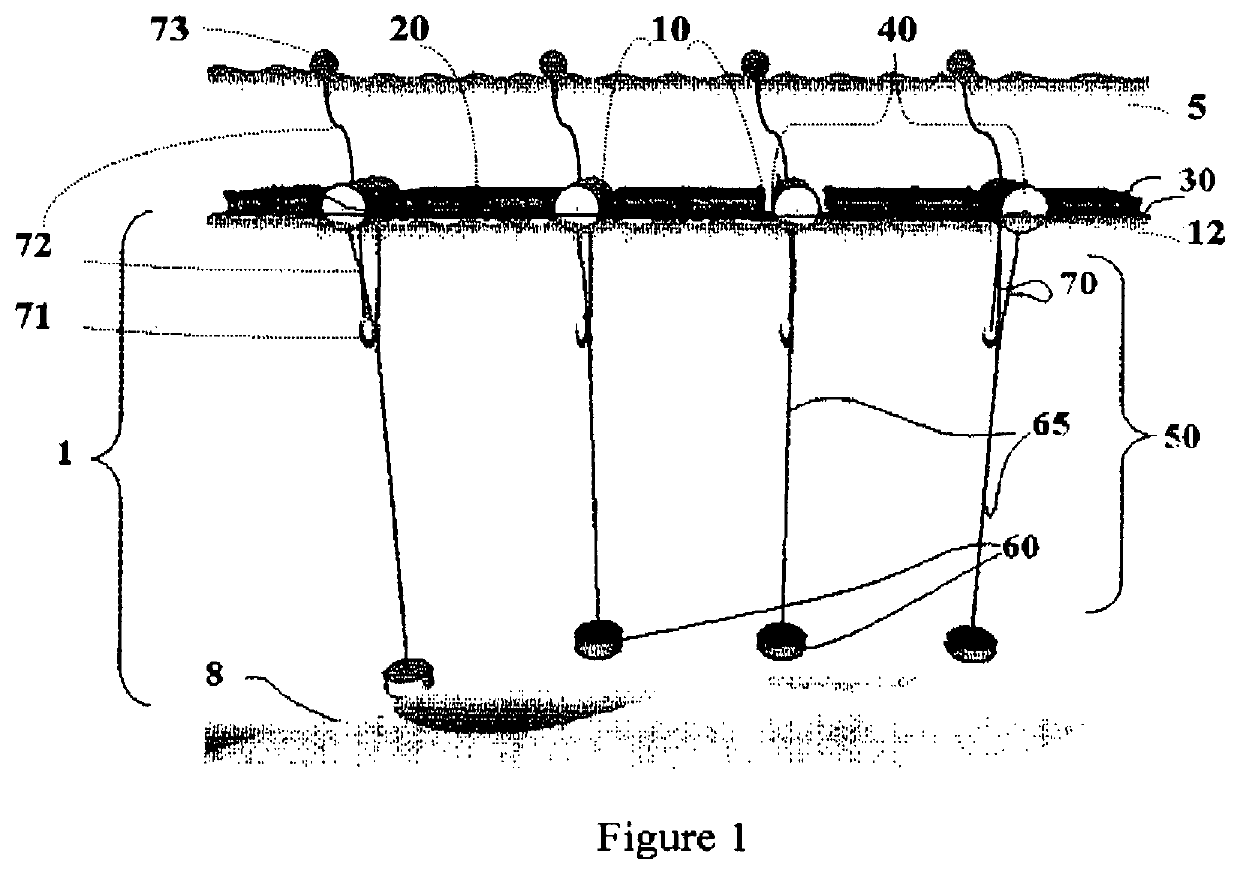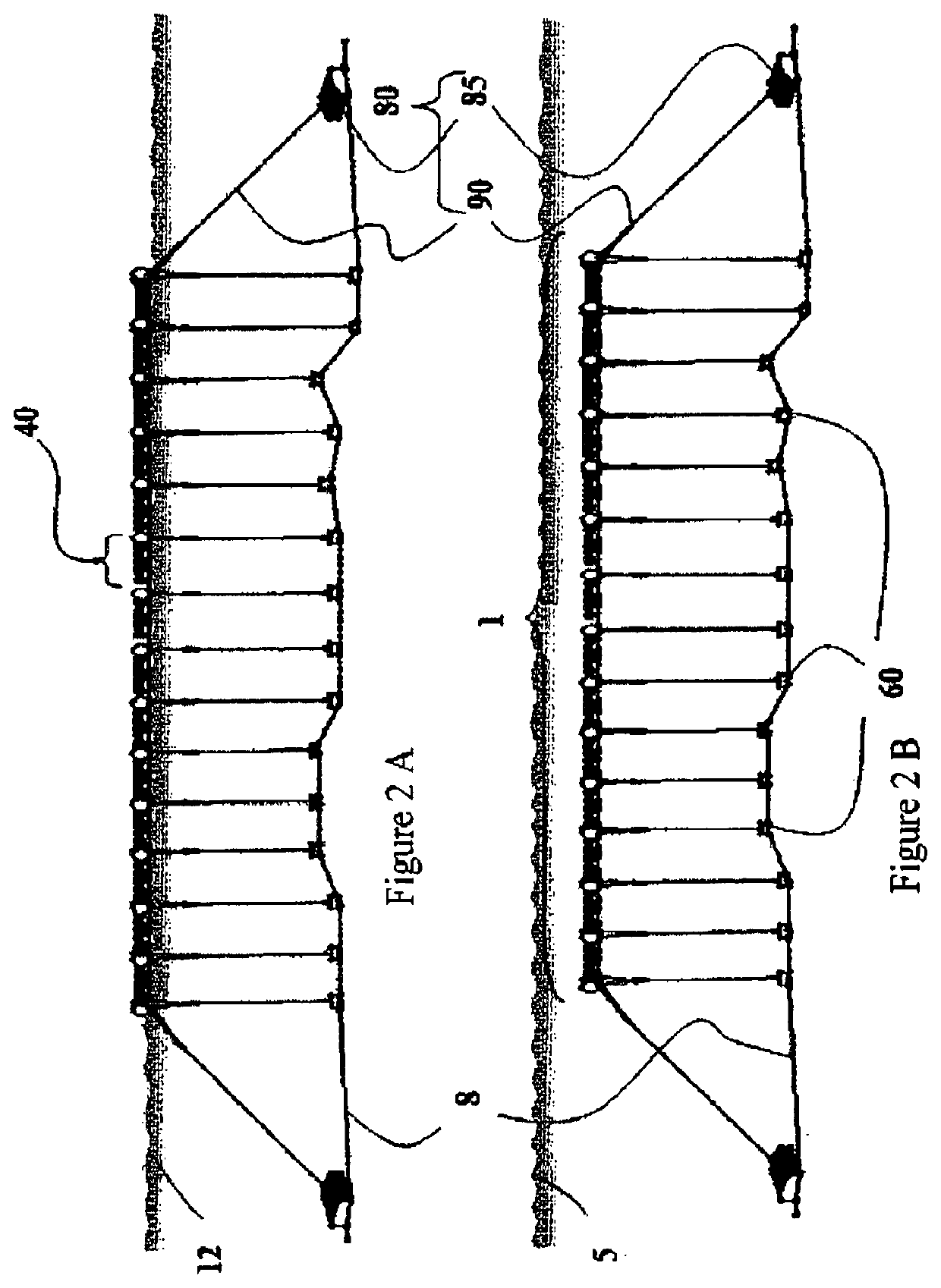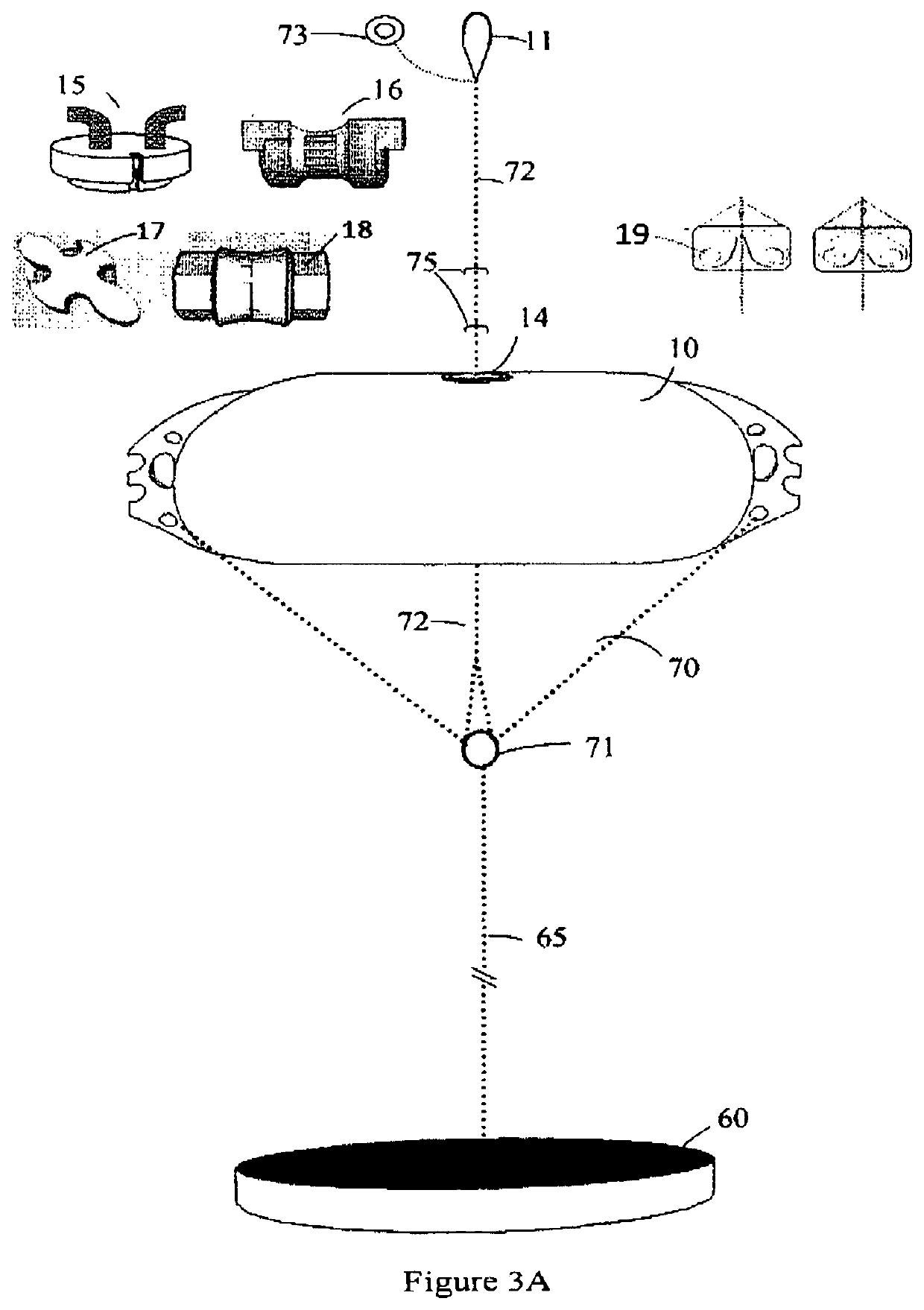Aquaculture assembly and method
a technology of aquaculture and assembly, applied in the field of aquaculture assembly and method, can solve the problems of limited inter-tidal shellfish growing system, high labor cost, and high labor cost in oyster cultivation
- Summary
- Abstract
- Description
- Claims
- Application Information
AI Technical Summary
Benefits of technology
Problems solved by technology
Method used
Image
Examples
examples
[0059]According to one working example of a system according to the invention, referring to FIGS. 2A, 2B and 6 to 9, a double-backbone system is used, with backbone lines 30 (24 mm Quality Equipment Danline, available from Tasmanian Marine Distributers Pty Ltd, 28 Merton Vale Circuit, Kingston Tasmania, 7050, Australia) anchored at either end via anchor-warp lines 90 (with same 24 mm Danline) to the sea bed 8, by appropriate anchors 85 (chosen to suit the environmental conditions of the aquaculture site: for example concrete or suitably heavy anchor weight, or an embedded anchoring system; in this instance, custom made 4 tonne single wedge concrete weights were used). The double-backbone may be 100 m in length, and be tensioned and held afloat with 100 litre floats 10 (available from Global Contract Services, Pty Ltd, 1317 Oaks Court, Sorell, Tasmania 7172, Australia) fastened between backbone lines 30 at 2 m intervals (with 5 mm Quality Equipment Mussel Lashing, available from Tasm...
PUM
 Login to View More
Login to View More Abstract
Description
Claims
Application Information
 Login to View More
Login to View More - R&D
- Intellectual Property
- Life Sciences
- Materials
- Tech Scout
- Unparalleled Data Quality
- Higher Quality Content
- 60% Fewer Hallucinations
Browse by: Latest US Patents, China's latest patents, Technical Efficacy Thesaurus, Application Domain, Technology Topic, Popular Technical Reports.
© 2025 PatSnap. All rights reserved.Legal|Privacy policy|Modern Slavery Act Transparency Statement|Sitemap|About US| Contact US: help@patsnap.com



